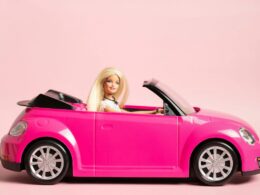With its extremely high levels of caffeine, a hip new soft drink is raising fears in the US that it might be dangerous for children, who have been snapping up the beverage since it was launched by famous YouTube personalities.
Prime was created in 2022 by American Logan Paul and Briton KSI, two influential YouTubers whose wacky − and sometimes controversial − videos are devoured by child-heavy audiences.
A first drink, Prime Hydration, did not contain caffeine. But this year, a second line was launched: Prime Energy.
A single can contains 200 milligrams of caffeine − far more than the 30 milligrams in a can of Coca-Cola, for example, or the 80 milligrams in a can of Red Bull.
A launch video showed the two internet stars playing video games and table tennis, very slowly and without enthusiasm at first, then frantically after drinking the beverage.
Since then, many TikTok videos have featured children proudly brandishing the famous bottles, set to a musical background proclaiming “We got Prime, boys!”
However, medical experts warn about the risks of younger children consuming caffeine.
Children under the age of 12 should not consume the chemical at all, according to the American Academy for Child and Adolescent Psychiatry (AACAP).
And between the ages of 12 and 18, a limit of 100 milligrams per day is recommended − or half a can of Prime Energy.
In addition to restlessness, anxiety and headaches, too much caffeine can cause a child to vomit or to suffer from high blood pressure or heart rhythm problems, according to the AACAP. Some children may be more sensitive than others.
Always read a product’s label
“This product has one true target market: children under the age of 18, and that is why I am sounding the alarm,” said top Democratic senator Chuck Schumer last week.
Prime Energy comes in flavours that might attract younger kids, such as orange-mango and raspberry-melon.
But the drink contains “eye-popping levels of caffeine for a child’s body,” the Senate majority leader said.
The refreshment is fashionable because “it is born from the reels of social media and the enigmatic world of influencers,” the senator said in a statement.
Schumer announced he had written to the head of the Food and Drug Administration (FDA), demanding an investigation into the levels of caffeine the drink contains and the marketing strategy adopted.
“Children under the age of 12 should not consume the chemical at all… and between the ages of 12 and 18, a limit of 100 milligrams per day is recommended − or half a can of Prime Energy”
The FDA responded last week that it is “reviewing the concerns” raised by the senator, and that it would respond to him directly.
“We encourage caregivers and families to read a product’s label before giving the product to their child,” an FDA spokesperson said in a statement.
The can does feature a discreet line indicating that the drink is not recommended for those under 18, though the warning may not be obvious to everyone planning to pop one open.
The FDA − which has already issued warnings in the past against several companies marketing both alcoholic and caffeinated beverages − noted that adults can generally consume up to 400 milligrams of caffeine per day without harmful effects, or four to five cups of coffee.
Expanding market
Paul partially responded to the controversy in a video posted to social media last Thursday.
He said he was offended by articles in some media that reported that Canada had recalled Prime Energy cans, though the move was only an action against illegal imports, as the drink is not officially distributed there.
“Prime formulas are complying with each specific country’s regulatory bodies,” he said.
“Actually, it doesn’t surprise me that we’re being targeted by massive corporate conglomerates and the US government,” he said, claiming: “We’ve effectively created a beverage so disruptive that it is eating the market shares of the biggest companies on the planet!”
The energy drink market is buoyant and expanding, and US supermarket shelves are stocked with several brands.
In its first year of operations, Prime sold $250 million worth of products, Paul had previously said in an interview.
For more children’s health-related articles, click here. For more Child stories, follow this link.










